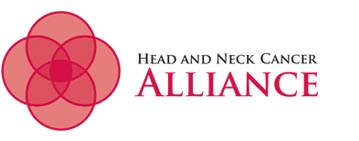
Head and Neck Cancer
According to the Head and Neck Cancer Alliance (HNCA), an organization dedicated to the prevention, detection, treatment and rehabilitation of oral, head and neck cancer through public awareness, research, advocacy and survivorship, head and neck cancers account for approximately three percent of all cancers in the United States. These cancers are nearly twice as common among men and are diagnosed more often in people over age 50 than they are among younger people.
Head and neck cancer is a term used to describe a number of different cancerous tumors that develop in or around the throat, larynx, nose, sinuses, and mouth. These cancers typically begin in the squamous cells that line the moist surfaces inside the mouth, nose and throat.
Tobacco use is the most preventable cause of head and neck cancer. In the U.S., almost 200,000 people die each year from smoking-related illnesses. The good news is that this figure has decreased due to the increasing number of Americans who have quit smoking. The bad news is that some of these smokers switched to smokeless or spit tobacco, assuming it is a safe alternative. By doing so, they are only changing the site of the cancer risk from their lungs to their mouths. While lung cancer cases are decreasing, cancers in the head and neck appear to be increasing, but they are curable if caught early.
Fortunately, most head and neck cancers produce early symptoms. The symptoms of head and neck cancers may include a lump or a sore that does not heal, a sore throat that does not go away, difficulty in swallowing, and a change or hoarseness in the voice. These symptoms may also be caused by other, less serious conditions. It is important to check with a doctor or dentist about any of these symptoms.
Many cancers of the head and neck can be cured, especially if they are found early. Although eliminating the cancer is the primary goal of treatment, preserving the function of the nearby nerves, organs, and tissues is also very important. When planning treatment, doctors consider how treatment might affect a person’s quality of life, such as how a person feels, looks, talks, eats, and breathes. Treatment options and recommendations depend on several factors, including the type and stage of cancer, possible side effects, and the patient’s preferences and overall health.
At the Radiation Oncology Services at Charleston Area Medical Center (CAMC), we treat head and neck cancer painlessly and noninvasively with external beam radiation therapy (EBRT). EBRT is an effective treatment for head and neck cancer, working within cancer cells to limit their ability to multiply. During treatment, high-energy X-rays are delivered to the cancer with a linear accelerator (LINAC). The treatment process is painless, safe and treatments take about 10 to 15 minutes. Side effects that can occur may require medication. Most patients return to routine activities immediately after completing treatment. Sometimes a combination of treatments, which may include surgery, radiation therapy and chemotherapy, is the best plan for treating head and neck cancer.
For more information about how the Radiation Oncology Services at CAMC treats head and neck cancer, please click here.
